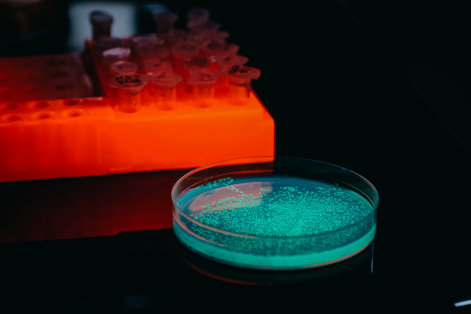Russian biologists have created a molecule which indicates the presence of multiple sclerosis
11 December 2020 г.

In the case of multiple sclerosis, it can take a long time from the onset of the disease to the appearance of its clinical signs. Moreover, the clinical manifestations of the disease are characteristic for the stages when the disease has already progressed quite strongly. Multiple sclerosis is a chronic autoimmune disease. The effectiveness of its treatment is highly dependent on timely diagnosis.
“In our work, a recognizing molecule and a luminous molecule are combined. At this stage, we have reliably demonstrated the possibility of detecting antibodies in the sera of patients, " explains Maria Vorobyova, senior researcher at the RNA Chemistry Laboratory of the ICBFM SB RAS.
Earlier, Novosibirsk scientists created molecules based on nucleic acids - aptamers, which can recognize specific antibodies characteristic of multiple sclerosis. Scientists from the Krasnoyarsk Institute of Biophysics SB RAS, in their turn, are developing analytical systems based on photoproteins - luminous bioluminescent proteins. If the sample contains antibodies characteristic of multiple sclerosis, the bioluminescent protein will generate a light signal indicating that the targeted molecule has been found. With the help of a special device, luminometer, the level of the emitted light is measured. The magnitude of the signal allows detecting the presence or absence of the disease.
The researchers note that aptamers, being nucleic acids, have the advantages over antibodies traditionally used in diagnostics. They can be obtained by chemical synthesis and they are more stable during transportation and storage. To date, the fundamental stage of research has been over; and additional research is necessary for developing a full diagnostic complex.
“We believe that in the future, after the refinement of our test system, it will be possible to recognize multiple sclerosis, monitor its course and estimate the effectiveness of the therapy applied,” says Vasilisa Krasitskaya, Candidate of Biological Sciences, senior researcher at the Institute of Biophysics, KSC SB RAS. - Nowadays, complex and expensive methods are used for this purpose. Compared to this, blood diagnostics is easier, faster and cheaper. MRI, of course, will remain the main method of making a diagnosis; we are not going to replace it. Our analysis will be a convenient additional tool, suitable, among other things, for a wide primary examination of patients. "
Multiple sclerosis is an autoimmune disease of the nervous system; during its development, cells of the immune system begin to attack the myelin sheath of nerve fibers. As a result, the conduction of the nerve impulse is disrupted, which initially leads to slight numbness of the limbs, and with the development of the disease, this can cause paralysis, blindness and death. According to current WHO statistics, the number of victims of multiple sclerosis is now about 2.3 million, and there are no drugs that can completely cope with it.
Share:
